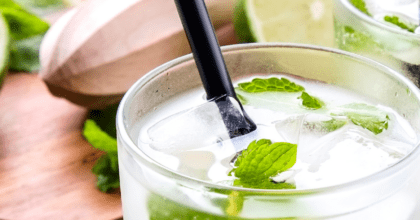One in five over 65's drink at home on a daily basis
While public perception focuses on younger drinking issues, new research from Mintel reveals that the other end of the generational spectrum is a definite cause for concern, as the research highlights excessive drinking among Britain’s over-65s. Indeed, as many as one in five (18%) over 65s drink at home on a daily basis. By contrast, just one in ten (11%) consumers aged 18-24 are daily in-home drinkers, with those least likely to be daily drinkers aged 45 to 54 (at 8%).
Following years of public health warnings, the research reveals for some the message is hitting home as 26% of Brits say they have cut back on how much they drink in the home over the past year and a further 25% of Brits say they have cut back on how much they drink out of home.
But just as the over 65s are the most frequent daily drinkers, they are also amongst the least likely to admit that they have cut back on how much they drink at home (22%). Those aged 65 and over are also least likely (19%) to admit that they have cut back on how much they have drunk out of home. In fact, once again, it is the 45s to 54s who are those most likely to have reduced the amount they drink in home – almost three in ten (29%) claiming to have reduced their in-home drinking.
Jonny Forsyth, Global Drinks Analyst at Mintel said:
“The public perception is that irresponsible drinking is the domain of younger drinkers, but research simply fails to back this up. The current generation of younger drinkers are one of the most sensible generations we have seen, and their attitude to alcohol – and indeed all drugs – is far more conservative than their Baby Boomer parents. It is clear the 45-54 year-old age group are still malleable to health messages, whereas those aged 65 and over tend to have much more engrained drinking habits. They were brought up to think that drinking everyday in moderation was OK, and many have maintained this behaviour, especially as they retire and have more leisure time on their hands, despite it being to the detriment of their health.”
Overall, almost nine in ten (87%) Brits have drunk at home in the last year, marginally higher than the 83% who did so out of home. Some six in ten (57%) adults drink at home at least once a week, with 41% doing so more than once a week and over one in 10 (12%) admitting they drink at home every day. This figure rises to around one in six (16%) men and just under one in ten (9%) women. Regionally, those living in London (20%) are more than twice as likely as those in the North, North West and Scotland (8%) to drink at home daily.
In terms of volume sales, the research reveals a decline, with sales falling almost 3% from 3.9 billion litres in 2009 to 3.8 billion litres in 2014. While the in-home alcoholic drinks market saw some benefit in the aftermath of the global economic downturn, as volume sales rose by 2% in 2010, since then, volumes have seen a downward trend, though the decline eased in 2013 and is expected to remain modest in 2014. The downward trend is expected to continue in the short term, with sales forecast to fall around 3% from 3.8 billion litres in 2014, to 3.7 billion litres in 2019, broadly in line with the performance in recent years.
While volumes have fallen, in terms of value, the in-home alcoholic drinks market has shown steady growth in recent years, benefiting from the trend of many drinkers switching more of their consumption to the cheaper in-home situation as well as an increase in unit price. Value sales jumped by 5% in 2010. Growth has slowed over the intervening years to 2-4% annually. Values are expected to reach £16.1 billion in 2014, a 2.5% increase over the previous year. Overall, between 2009 and 2014 sales of in-home alcoholic drinks increased 15%. This growth is forecast to continue in the coming years, with the market reaching £18 billion by 2019.
“Alcohol consumption in the UK is in decline reflecting considerations such as continued financial pressures and health awareness. Initiatives such as the now-abandoned alcohol tax escalator, while raising extra money for the public purse, have pushed up prices at a time when discretionary spending is squeezed. With prices rising inexorably, the in-home market is vulnerable to consumers cutting back on how much alcohol they buy. However, external factors such as the weather and high-profile events such as the football World Cup could help to boost spending on alcoholic drinks.” Jonny continues.
Looking at the types of drinks drunk in the home, wine remains the most popular, with some 68% of Brits who drink at home enjoying a glass of wine. Lager (50%) is the nation’s second favourite drink in the home, and cider is the third most popular choice at 41%. Wine is a firm favourite amongst those aged 65 and over – some 82% drinking this at home, in contrast to 58% of 18 to 24 year olds who drink wine. Meanwhile, lager is most popular amongst those aged 25 to 44 (58%) and least popular amongst those aged 65 and over 26%.
In terms of sales, wine is the largest in-home alcoholic drinks category by volume, accounting for 25% of volume sales. Cider also accounts for 16% of volume, reflecting its increased popularity in recent years. “Cider has been the big winner in retail over the past couple of years, led by 18-24 year-old men and women. It now has 56% in-home penetration among this younger age group. which puts it equal to beer, which has struggled to engage with younger women.” Jonny concludes.
Note to Editors
Mintel’s Drinking in the Home – UK – 2014 report uses a sample size of 1930 consumers and is available to purchase from Mintel priced £1750.
Press review copies of the report and interviews with Jonny Forsyth are available on request from the press office.
For the latest in consumer and industry news, top trends and market perspectives, stay tuned to Mintel News featuring commentary from Mintel’s team of global category analysts.
-
Mintel StoreGet smart fast with our exclusive market research reports, delivering the latest data, innovation, trends and strategic recommendations....View reports
-
Mintel LeapMintel Leap is a revolutionary new AI-powered platform that will transform your research process....Book a demo







































